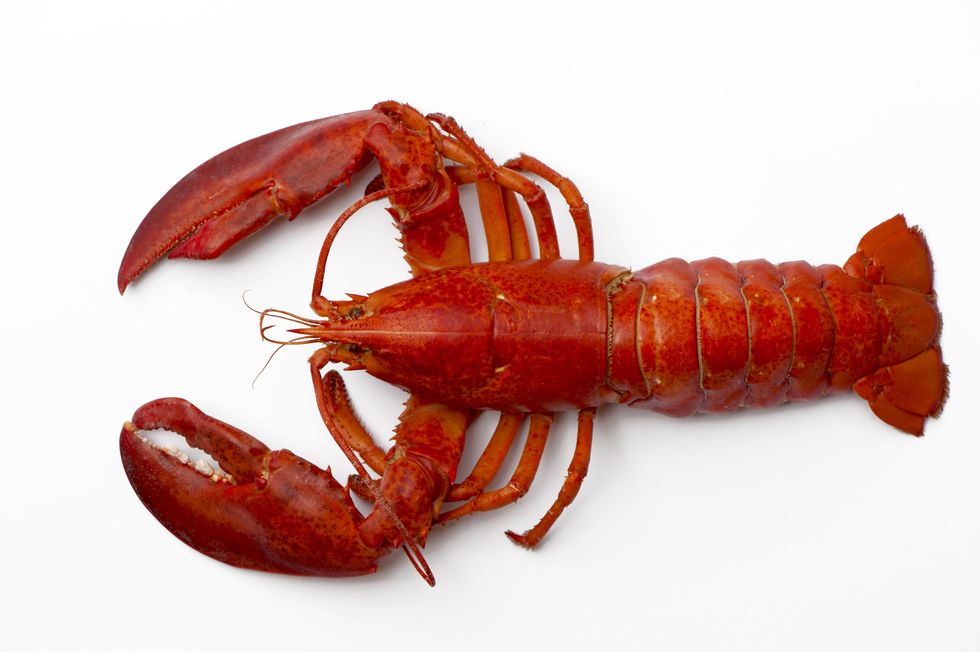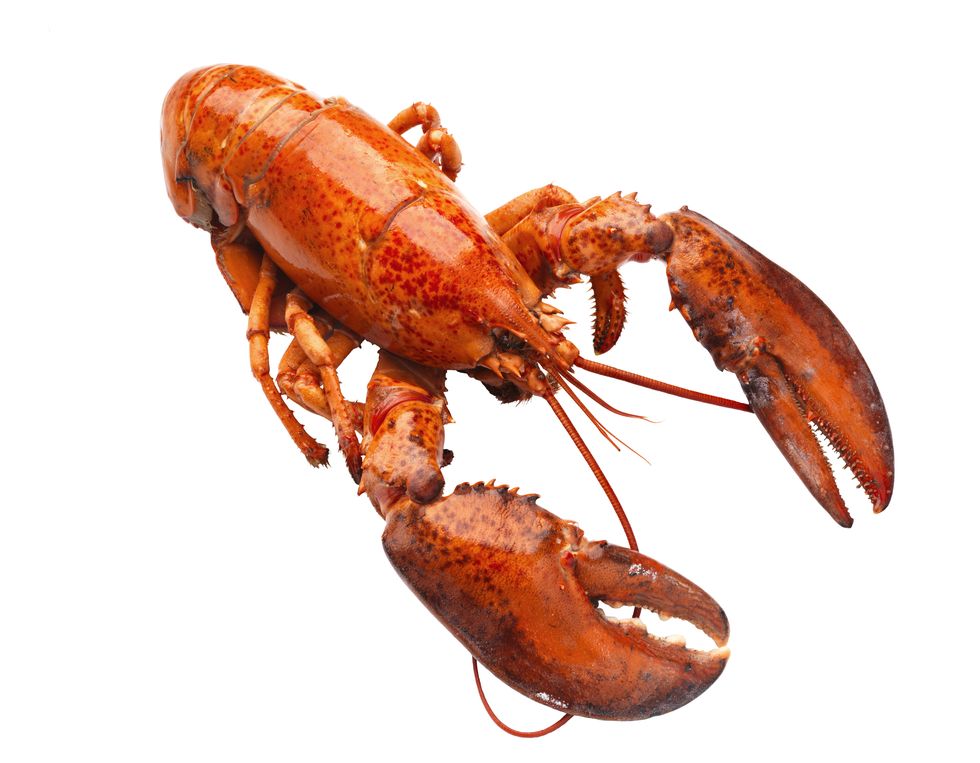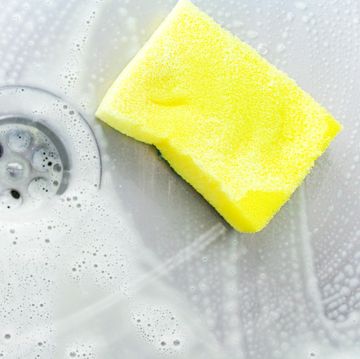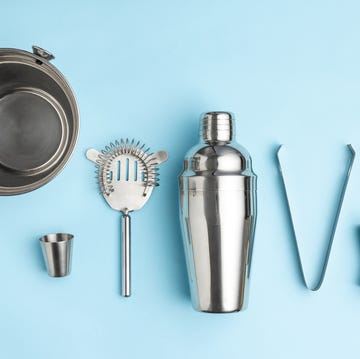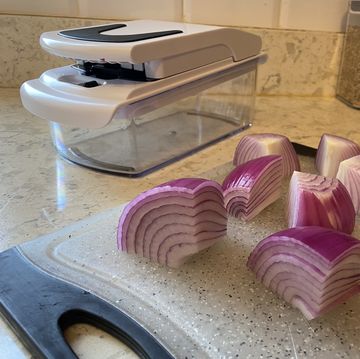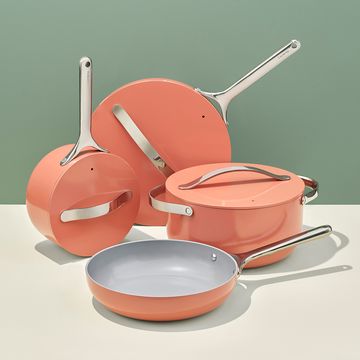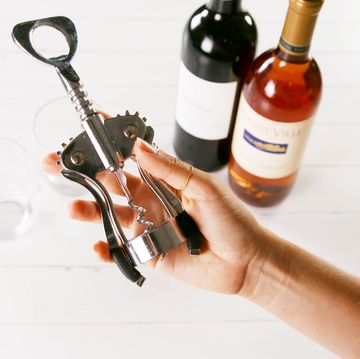The weather is warming up, which means that lobster season is approaching in many parts of the United States. This luxurious protein can be served in many ways: decadent mac and cheeses, classic lobster rolls, and creamy bisques.
Stores offer conveniently pre-shelled lobster meat in cans or in frozen packages. But the most cost effective, visually beautiful, and flavorful option is buying lobsters in the shell. Cooking such a pricey meal can be a daunting task, but thankfully, we have a foolproof method to achieve perfectly cooked lobster.
Thing is, cooking the crustacean is only half the battle; figuring out how to eat it is just as hard. These animals have a firm exoskeleton that protects them from predators. And once cooked, you’ll likely need some upper body strength and a few tools to extract the tender meat from the bright red shell.
More From Delish

Depending on which lobster you buy, the method may vary. We’re breaking down (pun intended) the best way to eat lobster. But first, here are the two types you'll likely find at the seafood counter:
Soft Shell Lobster
Also known as new shell lobster, "soft shell" refers to a particular stage in the crustacean’s growth cycle. In order to grow larger, lobsters will molt their exoskeletons in the warmer months to grow a roomier shell. This developing shell is much thinner and more malleable than a fully hardened one.
Soft shell lobster is renowned for its flavor. “As the lobsters grow into their newly formed shell, there is a gap between the meat and the shell that seawater fills, allowing it to naturally marinate the meat,” according to the Maine Lobster Marketing Collective. “The result is the sweetest, most tender, most lobster-y lobster on earth.”
But what makes this type of lobster especially coveted is how easy it is to eat. The tender and delicate shell gives easily under pressure, so you can often break it down with just your hands. Otherwise, a pair of kitchen shears can cut through the shell with little resistance.
Hard Shell Lobster
Hard shell lobster is available year-round and typically harvested in colder waters. Just like the soft shell variety, this type of lobster also refers to a stage of their growth cycle. In fall and winter, the environment is not warm enough for lobsters to molt their shells. In fact, to better protect themselves from the cold, lobster shells are especially thick during these seasons.
While soft shell lobster is preferable in many circumstances, hard shell certainly has its merits. They are more readily available and cheaper. Hard shell lobsters also come with more meat, and the meat is heartier and can withstand prolonged cooking in dishes like mac and cheese and risotto.
But there’s a catch: they’re much more difficult to break down. The hard shells require specific tools to open and extract the meat. At the basic level, you’ll need a lobster cracker, a seafood pick, and maybe even a mallet. Standard silverware is typically too large to fit in all of the nooks and crannies, so you’ll need the longer, thinner seafood utensils to make sure you don’t waste any meat.
Now that you know which lobster you have, it's time to get cracking. Grab your bibs, your napkins, and a bowl to discard the shells.
Here's How to Successfully Break Down a Whole Cooked Lobster
Step 1: Claws
With your hands, twist and pull the front claws of the lobster until they separate from the rest of the body. You’ll have two claws that each have two small knuckles attached. Twist the knuckle section off of each claw and set aside. On the remaining claws, wriggle and pull off the smaller pincher.
This is where the process depends on what kind of lobster you have. If you’re working with a soft shell lobster, you can easily break the shells with your hands or a pair of scissors. Hard shell eaters, it’s time break out your lobster cracker.
Remove the small piece of meat inside the smaller pincher with a seafood pick. Then, use your hands or a cracker to crack the middle of the shell near the base of the claw. Carefully pull the claw meat out. Repeat with the second claw.
Step 2: Knuckles
Those knuckles may seem less valuable than the classic claws and tails, but they are full of flavorful meat that’s worth working for. Using your hands, scissors, or a cracker, separate the knuckles into their two jointed sections. Make sure to be careful of the small spiky parts of the shell. Using a seafood pick, push the meat out of each knuckles.
Step 3: Tail
This stage requires the most physical strength and can make some people squeamish. Hold the tail in one hand and the body in the other. Then twist and pull the two sections apart. You may seem some light green goo come out—that’s called the tomalley. This delicacy is actually the liver and pancreas of the lobster and is often mixed into butter and enjoyed for its deeply concentrated flavor. But if that’s not your thing, no worries. Just use a napkin to wipe it away.
Once you have the tail separated, it’s time to remove the fins. You should be able to easily pull off the fins with your hands. You can either pull out the small bits of meat in the fins with a seafood pick, or just suck it out with your mouth.
Then you’ll be left with the remaining tail in the shell. If you’re eating a soft shell lobster, you should be able to crack open the shell and extract the meat easily. For hard shell varieties, use either a seafood pick or your thumb to push into the hole left behind from removing the fins. Gently push the meat under the shell until the whole tail comes out from the other side.
Step 4: Legs
The primary parts of the lobster meat are now ready to eat, but don’t forget about the legs! There are six small legs attached to the body, and all you need to do is simply twist and pull them off. And just like with the fins, you can use your trusty seafood pick or your mouth to pull the meat out of the shell.
Extra Credit: Body
Most people will stop there. But if you want to get your all of your money’s worth, you can eat the small amount of meat spread throughout the lobster’s head and body. But be warned: this process is messy and requires some extra work.
Place your thumb inside the body cavity and press downward. Then, with your other hand, pull off the top shell of the body and set it aside. In the remaining bottom half of the body you’ll find more of that green tomalley. You can save it, or discard and rinse it out with cold water.
Hold the body with both hands and pull apart until the shell cracks open and exposes small pockets of flavorful meat. You can use your fingers or a pick to pry out the tiny pieces. Depending on the size of your lobster, you may end up with about ½ to ¾ cup of meat.
And there you have it: every step to break down a whole lobster from the shell. Now you can serve it in a lobster salad, a cheesy dip, or if all else fails, a hearty dose of melted butter.
How do you like to serve your lobster? Let us know in the comments.
Gabby Romero is Delish’s editorial assistant, where she writes stories about the latest TikTok trends, develops recipes, and answers any and all of your cooking-related questions. She loves eating spicy food, collecting cookbooks, and adding a mountain of Parmesan to any dish she can.




